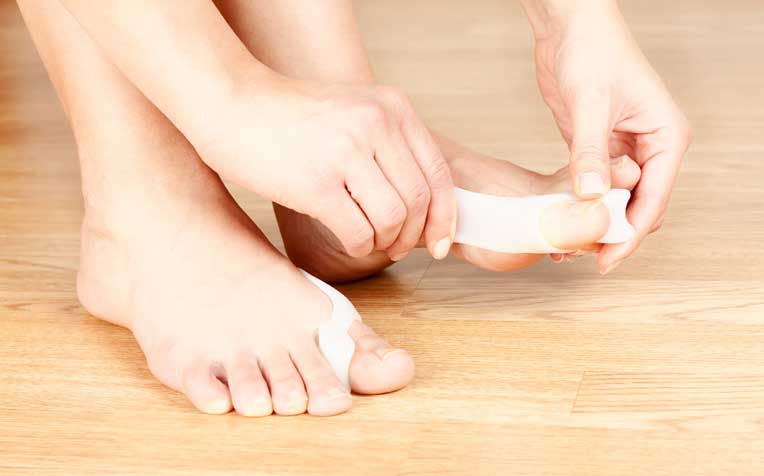A bunion or hallux valgus, foot deformity involving the bones and joints of the big toe. Toe to drift toward the second toe, and two toes may even overlap. The bone of the big toe joint misalignment due to deteriorating indented, making the front legs seem wider.
bunion will not go alone; it can only worsen with age. A mild bunion may be painful at first, but in the end, it can lead to big toe joint pain and difficulty with shoe fit. You may get in touch with custom foot orthotics for the best consultation.
What causes bunions?
People of all ages, ethnicities, and fitness levels can get bunions. However, it is more common in women and in the elderly. Bunions acquired defects, but can also run in families.

Image Source: Google
bunion sufferers can be divided into two broad categories. One is people with bunions caused by other medical conditions such as gout, rheumatoid arthritis, or neuromuscular diseases. The other is the person with bunions are caused by poor foot function, such as collapsed arches or flat feet. The second group of people is often healthy and active.
Prolonged wearing ill-fitting shoes, such as shoes with narrow, pointed tip box, do not cause bunions per se, but it does not increase the risk of developing a bunion in individuals who are vulnerable to them.
What can you do for a bunion?
If bunions are viewed and properly treated early, like, during childhood, the deformity can be slowed or stopped. preventive bunion treatments including footwear with instep support and toebox airy, possibly with the addition of orthotic shoe inserts.
Avoid regular use of tight shoes, especially high heels, and narrow-toed shoes. In addition, avoid activities that require not properly fit shoes and foot pressure, such as ballet. In short, preventive care often call for a change in lifestyle in which the person concerned leg.
Palliative self-treatment, including rest, application of cold compresses, and the use of silicone bunion shields are available in orthopedic shoe stores or large retail pharmacies. It can relieve the pain of a bunion, but it will not fix the underlying problem.